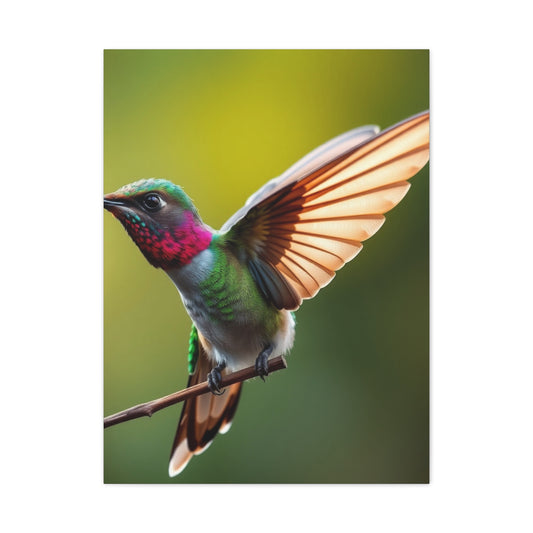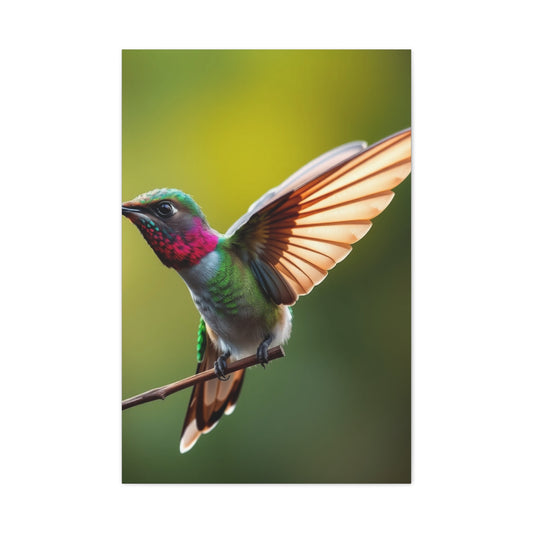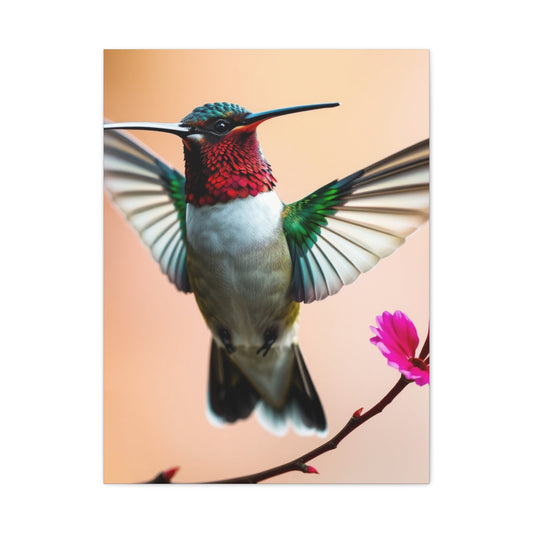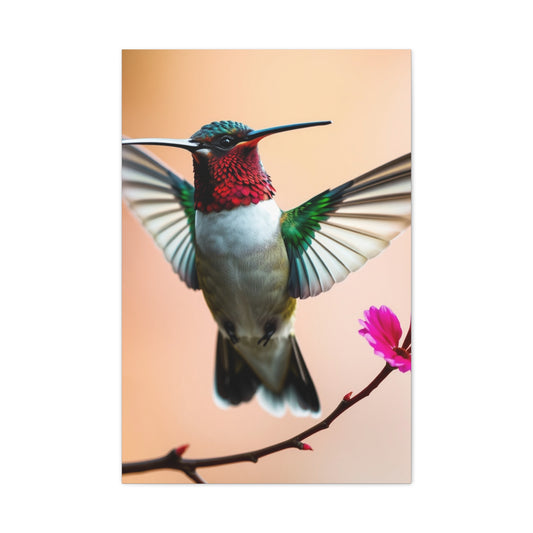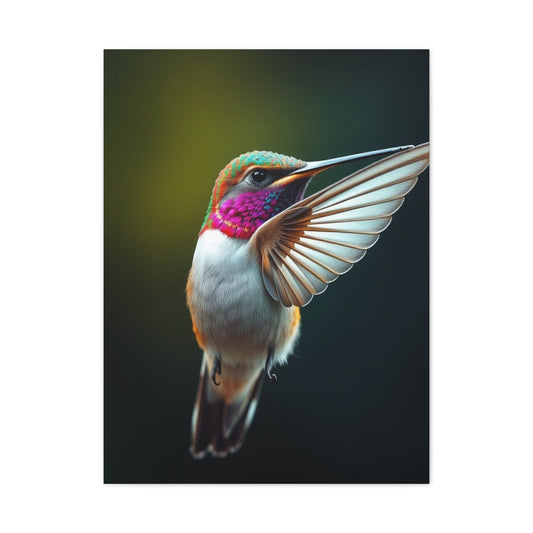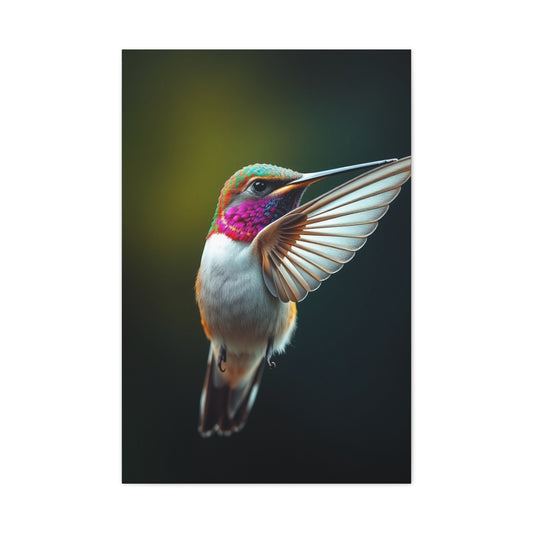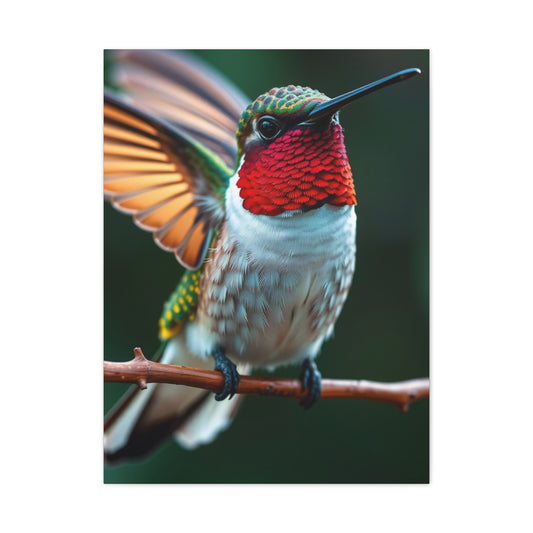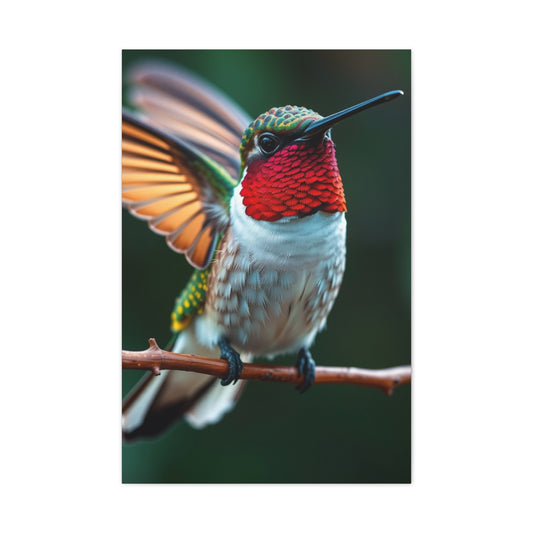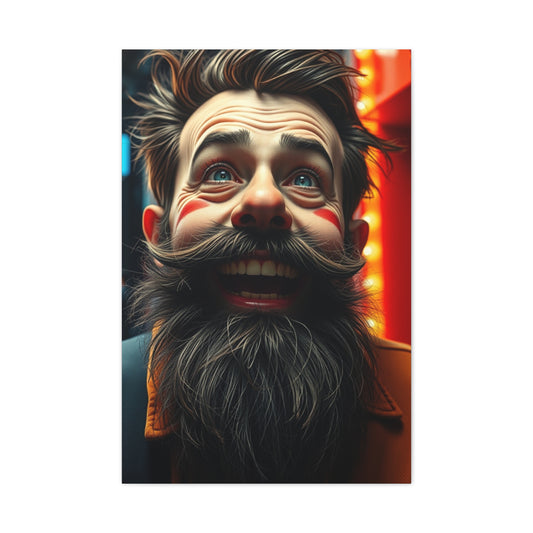Choosing the right fulfillment method also impacts your business's ability to scale. Print-on-Demand services are highly scalable, making them an excellent choice for businesses aiming to grow quickly or experiment with different types of products, such as custom photo prints or personalized decorative artwork. POD platforms typically have automated processes that reduce the need for manual intervention, helping to streamline operations and fulfill orders faster. This is particularly advantageous for businesses with fluctuating demand or those just starting out who may not have the resources to manage inventory or invest in large production runs.
On the other hand, a local print shop might be better equipped to handle more complex orders or provide unique, one-of-a-kind pieces. If your business is focused on premium, high-quality products like custom art prints, working closely with a local print shop allows you to maintain more control over the process. With a local partner, you can oversee every step, from design to final production, ensuring that the end result aligns with your brand’s vision and quality standards. This level of direct involvement can be particularly beneficial for businesses that specialize in producing bespoke items where the nuances of material and finish are crucial.
In addition, partnering with a local print shop can offer faster turnaround times for larger orders, something that’s crucial when dealing with tight deadlines or customer demands. Local shops are also more likely to offer personalized customer service, which can build stronger relationships with your clientele. This level of service could be invaluable when selling custom pieces, such as art prints or decorative pieces, that require special attention to detail. The ability to communicate directly with your print provider allows you to refine designs, adjust materials, and ensure the final product matches your exact specifications.
Ultimately, both POD and local print shops offer unique advantages depending on your business goals. By understanding the strengths and limitations of each, you can select the right fulfillment method—or a combination of both—that aligns with your brand’s needs and growth trajectory. Whether you're creating a collection of personalized home decor or offering custom art prints, choosing the right method will ensure that your products meet your customer’s expectations while allowing your business to thrive. As the market for custom products grows, it’s important to balance cost, quality, and efficiency to find the most effective path forward for your business.
.Flexibility and Scalability: The POD Advantage
When it comes to launching a custom apparel business, one of the most important decisions you'll make is choosing the right fulfillment model. Two common approaches are Print-on-Demand (POD) and traditional print shops. Each model offers distinct advantages and challenges, and understanding the differences can help you decide which aligns best with your business goals. POD allows entrepreneurs to create and sell unique designs without worrying about upfront inventory, as products are only produced when an order is placed. Traditional print shops, on the other hand, often require bulk orders and long-term commitments, which can lead to higher initial costs and the risk of unsold stock. The POD approach is often considered more accessible for new entrepreneurs or small businesses, as the barrier to entry is lower. It also allows for a more dynamic and responsive approach to trends, as you can easily adjust your offerings based on customer preferences without worrying about excess inventory. Since you’re not required to place large orders, you only pay for items when they are sold, reducing financial risk significantly.
This model also appeals to entrepreneurs who want to focus on creativity and marketing rather than the complexities of managing a warehouse, fulfilling orders, or maintaining stock. By outsourcing the production and shipping to a POD provider, businesses can streamline operations and focus more on growing their brand.
Testing New Designs with Low Risk
The POD model offers a high level of flexibility and scalability for entrepreneurs looking to test new designs without a significant financial commitment. Since items are printed on demand, you’re not tied to large quantities or storage costs. This makes it an ideal choice for businesses that are still in their early stages or want to offer a wide variety of products without overextending their resources. Custom apparel, mugs, and home decor can be offered with minimal upfront investment, and your focus can remain on marketing and customer engagement rather than logistics. With POD, you also have the ability to quickly pivot and adapt to changes in consumer behavior or trends.
For example, if a certain design becomes popular or there’s an increase in demand for a particular product type, you can easily expand your offerings without needing to invest in bulk orders or manage additional storage. This flexibility not only minimizes risk but also allows you to cater to niche markets and specialized products. It also enables you to experiment with designs that might be more experimental or outside the norm, without the pressure of trying to sell large quantities upfront. Furthermore, as a POD model typically requires no minimum order, businesses can test different product types and designs to gauge market interest, ensuring that you invest in only the most profitable items.
Cost Efficiency in Bulk Orders: Traditional Print Shops
Traditional print shops, however, may offer better pricing when it comes to large orders. For businesses with a clear customer base or those who anticipate bulk sales, working with a print shop might lead to better profit margins. These shops typically offer the advantage of faster production times, especially for high-volume orders, and often provide additional customization options, like specific garment types or printing techniques. Businesses that anticipate steady demand for certain designs may find that traditional print shops offer a more cost-effective solution in the long run.
By committing to larger quantities, you can take advantage of lower unit costs, and this model can be particularly effective for brands that already have established demand or a loyal customer base. Traditional print shops may also offer higher-quality printing options or specialized services, such as embroidery or custom labeling, which can elevate the perceived value of your products. For businesses that are past the initial growth phase and are looking to scale up, ordering in bulk from a traditional print shop may streamline production and reduce per-unit costs.
However, the challenge lies in the upfront investment and storage costs associated with purchasing large quantities. You also need to factor in the risk of unsold inventory, which could result in lost profit if products don’t sell as expected. Therefore, businesses considering this model should have a clear sales strategy and confident projections for the demand of their products.
Control Over Quality and Production Time
Another key consideration is control over quality and turnaround times. With POD, the printing process is handled by a third-party provider, meaning you might have less direct control over the final product’s quality or shipping speed. However, many POD services have strict quality control processes in place to maintain consistent results, and they often partner with reputable manufacturers to ensure the standard of the products. That said, with POD, you’re essentially outsourcing a significant portion of your production, and if there are any issues with quality or delays, it may be difficult to resolve quickly. For some businesses, this can create frustration, especially if they have a strong commitment to delivering premium products.
In contrast, traditional print shops offer a more hands-on approach, giving you the opportunity to oversee the production process and ensure the quality of each item before it’s shipped. This level of control can be particularly beneficial for businesses that prioritize premium, customized items and require more oversight. Having a close relationship with your print provider also enables you to address production issues more swiftly and with a more personalized touch.
Moreover, traditional print shops are often able to meet tight deadlines and produce larger quantities in shorter periods, ensuring that you meet customer expectations and avoid delays. However, this added control also comes with its own set of responsibilities, as you’ll need to manage communication with the print shop and monitor production schedules closely.
Making the Right Choice for Your Business
Ultimately, the choice between Print-on-Demand and traditional print shops depends on your business’s needs, the products you offer, and the level of investment you’re ready to make. If you’re looking for a low-risk, flexible model that allows you to quickly adapt to market trends, POD might be the best fit. But if you’re confident in your designs and anticipate steady sales, a traditional print shop could provide better pricing and production efficiency. Carefully weighing these factors will help you choose the model that best supports your vision and growth strategy. For entrepreneurs who are just starting out, the POD model allows you to experiment and build your brand with minimal risk. It gives you the opportunity to reach a global audience and introduce your designs without the burden of inventory management.
However, for established businesses with a dedicated following or high-volume orders, a traditional print shop may provide the scale and control needed to meet demand efficiently. It’s essential to consider factors such as upfront investment, quality control, production speed, and potential for growth when making your decision. The right fulfillment model should align with your long-term goals, whether that’s testing the waters with a new concept or scaling an established brand.
How Print-on-Demand (POD) Works
In a Print-on-Demand (POD) setup, entrepreneurs create their custom designs—whether they’re for t-shirts, decorative prints, or bespoke artworks—and showcase them on their online stores. Once an order is placed, the POD service handles production and ships the product directly to the customer. For example, a customer might order a custom t-shirt featuring their favorite graphic, logo, or quote, or a custom artwork showcasing unique artwork. In this case, your POD partner manages the entire process—from printing to packaging to shipping—so you don’t need to worry about inventory or fulfillment logistics.
This model allows entrepreneurs to avoid the need for upfront investments in inventory. In traditional retail or wholesale, you’d typically have to order large quantities of products in advance, pay for storage, and hope that the products sell. With POD, however, you only pay for items as they’re ordered, reducing the financial risk of overstocking. It’s ideal for businesses that want to test out new designs, experiment with different products like custom t-shirts, art prints, or even decorative artwork, without committing to large orders upfront.
Moreover, POD services are flexible, allowing you to create a diverse range of products. These products may include custom t-shirts, hoodies, hats, mugs, and even home decor items like custom wall pieces and artistic prints. This means that whether you want to sell branded apparel, personalized gifts, or unique decorative prints, POD lets you scale your product offerings with minimal effort. You’re able to experiment with new designs, stay updated with current trends, and offer customers an ever-evolving product range without worrying about excess inventory.
Streamlined Workflow with POD
Once you’ve uploaded your design to your online store and integrated your store with a POD provider, the process becomes highly automated. As customers place their orders, the information is sent to the POD provider, where the product is printed and shipped directly to the customer. This seamless workflow allows you to focus on the more creative aspects of your business, such as designing new canvas panel or tees, marketing your brand, and engaging with your customers.
For example, let’s say you are an artist who designs custom artwork for canvas art. Once your designs are uploaded to your online store, customers can browse and purchase the prints in various sizes. When an order comes in, your POD partner will print the canvas using high-quality materials and ship it directly to the customer’s door. You don’t have to worry about packaging, shipping delays, or inventory management.
Additionally, POD platforms often offer various customization options, including different print materials, such as premium cotton canvas, and various framing options for wall art. Customers can choose the type of product they want, from a stretched canvas to a gallery wrap or even an unframed print. This gives you the flexibility to cater to different preferences and deliver a personalized shopping experience.
Why POD Works for Custom Apparel and Canvas Prints
The POD model is especially attractive to businesses offering custom apparel and decorative prints. With custom apparel, such as t-shirts or hoodies, the POD provider can print your designs directly on the fabric using techniques like Direct-to-Garment (DTG) printing or sublimation. For photo prints and other forms of artistic prints, POD services use high-quality printing methods to transfer designs onto premium materials like fine art canvas or photo paper, ensuring that the final product looks professional and true to the original artwork.
What makes POD especially advantageous is that there’s no need to store inventory. Your designs are only printed when orders come in, which is particularly useful for businesses that offer a wide variety of designs. With no physical inventory to manage, you eliminate the hassle of stock control, warehousing, or dealing with unsold items. Plus, you can easily scale your business by adding new products or designs at any time. The flexibility of the POD model means that you can experiment with different print styles and materials without worrying about large upfront costs.
In the world of photo prints and decorative artwork, where customers often look for unique, personalized items, POD offers a huge advantage. Whether you’re selling prints of famous landmarks, abstract art, or custom photos for home decor, POD allows you to bring these creations to life with minimal investment and maximum flexibility. This makes it easier for entrepreneurs to offer a diverse range of products and adapt to market trends, all while keeping costs and risk low.
Key Advantages of POD for Custom Apparel and Canvas Prints
-
Low Upfront Costs: POD eliminates the need for a large inventory investment, as products are only printed when ordered. This reduces the financial risk for new entrepreneurs and allows businesses to scale more efficiently.
-
Global Reach: Since the POD provider handles production and shipping, businesses can reach customers globally without worrying about international shipping logistics. Many POD providers have fulfillment centers in multiple regions, which means your products can be shipped worldwide.
-
No Inventory Management: Forget about keeping track of stock levels or dealing with excess unsold items. With POD, you simply create designs, upload them to your store, and let the provider handle everything else.
-
Design Flexibility: You can offer an unlimited range of custom products. Whether you’re selling custom t-shirts or creating personalized canvas prints for home or office spaces, POD gives you the freedom to experiment with new designs and products without needing to purchase large quantities.
Pros of POD for Custom Apparel and Canvas Prints:
-
Cost-Efficiency and Low Risk: With POD, there’s no need for a large upfront investment in printed products or inventory. You only pay for products as orders come in, which is ideal for testing designs without worrying about overstocking or wasting products.
-
Time Savings: The POD model allows you to focus on the creative side of your business—designing t-shirts, creating unique canvas prints, or even offering custom wall art. The printing, packaging, and shipping are all handled by a third-party provider, leaving you with more time to focus on marketing and branding.
-
Flexibility for Customized Products: POD is an excellent choice for businesses that want to offer personalized items, such as custom wall art, canvas prints, or t-shirts featuring unique designs. You can easily update your online store with new artwork or styles without worrying about large upfront investments.
How Traditional Print Shops Work
When working with a local print shop, you’ll generally provide your custom design—whether it’s for a custom t-shirt, a canvas print, or wall art. The print shop will then handle the printing process according to your specified quantities, sizes, and design preferences. This is the traditional approach, and it typically works well for larger quantities or when you need specific, personalized options.
In the case of custom apparel, you would begin by submitting your artwork to the print shop, either as a digital file or physical design. Depending on the method of printing chosen—screen printing, direct-to-garment (DTG) printing, embroidery, or heat press—the print shop will apply your design to the apparel. If you’re ordering t-shirts in bulk for a business or event, this process is generally more cost-effective when the print shop can produce a large quantity of garments at once. The print shop will typically give you a quote based on the number of items, the complexity of the design, and the printing method chosen.
For custom photo prints or decorative artwork, the process is similar but tailored to the specific materials involved. You provide your design, and the print shop will print it onto materials such as high-quality photo paper, wood panels, or other specialty surfaces. If you're ordering photo prints for personal use or as part of your business, the print shop may offer a variety of sizes, framing options, and finishes, such as matte, gloss, or satin. They might also offer options for gallery wraps or stretched photo prints, where the print is stretched over a wooden frame for a more polished, ready-to-hang look. These choices give you a range of possibilities to suit your aesthetic preferences, whether you're aiming for a contemporary, vintage, or minimalist vibe in your home or workspace.
The Printing Process
Once your design is submitted, the traditional print shop will begin by creating a digital file from your artwork, ensuring that it is in the appropriate format and resolution for printing. If the design requires specific color matching, the print shop will also review Pantone colors or adjust the artwork to ensure accuracy.
Screen Printing: For custom apparel like t-shirts, one of the most common methods used by traditional print shops is screen printing. This process involves creating a stencil, or screen, for each color used in the design. Ink is then pushed through the screen onto the fabric. This is a great option for designs with few colors and is highly effective for large runs of t-shirts or other garments. Screen printing provides durability and is especially popular for bulk orders, like for school events or promotional merchandise.
Direct-to-Garment (DTG) Printing: DTG printing is another common method used by print shops for custom t-shirts and apparel. It involves printing the design directly onto the fabric using specialized inkjet printers. This method allows for full-color, highly detailed designs to be printed without the need for screens, making it ideal for smaller quantities or designs with a lot of intricate details. DTG also works well for printing on a variety of materials, including cotton and polyester.
Embroidery: For custom shirts, hats, or jackets, embroidery is another method that is often used by traditional print shops. Embroidery adds a textured, high-end feel to the design and is commonly used for logos or monograms. While the setup process for embroidery can be more time-consuming than screen printing, it provides a polished, professional finish that is especially popular for corporate or promotional items.
Canvas Prints and Wall Art: When it comes to custom canvas prints or wall art, traditional print shops typically use large-format printers that can accommodate the size of the artwork and print onto premium-quality materials. The most common printing methods for canvas prints are inkjet or giclée printing, which delivers high-resolution prints that showcase the fine details and vibrant colors of the original artwork. Many print shops also offer professional framing services, where they stretch the canvas over a wooden frame or add borders to make the print ready for hanging.
Advantages of Traditional Print Shops
-
Personalization and Customization: One of the major benefits of working with a traditional print shop is the ability to customize the design process. Print shops often offer more flexibility when it comes to printing techniques, size options, and garment placement. Whether you want a design on the front, back, sleeves, or even across the collarbone, print shops can accommodate a variety of creative ideas. This level of customization is especially useful for small businesses or individuals who want to offer unique designs that stand out.
-
Bulk Orders: Traditional print shops tend to be more cost-effective for larger orders. For instance, if you need to order hundreds or even thousands of custom t-shirts, screen printing in bulk can significantly lower the cost per unit. This is a great option for events, corporate giveaways, or merchandise that needs to be produced in larger quantities. Print shops often have minimum order requirements, but if you’re looking for a large batch of custom canvas prints or wall art, this approach is ideal.
-
Quality Control: Working with a local print shop often provides more direct control over the final product. You can request samples before the full production run, check the quality of the materials, and make sure everything is printed according to your specifications. Additionally, having a personal relationship with the print shop allows for quicker communication if you need any adjustments to your design or materials.
-
Support Local Business: Choosing a local print shop means you’re supporting small businesses in your community. Many print shops are independently owned, and by working with them, you contribute to the local economy while receiving a more personalized experience. You can also build long-term relationships with these businesses, which can be beneficial for future projects.
Potential Drawbacks of Traditional Print Shops
-
Higher Upfront Costs for Small Runs: While bulk orders are often cheaper per unit, ordering smaller quantities from a traditional print shop can be more expensive than opting for a Print-on-Demand service. Print shops typically have minimum order requirements, and smaller quantities may incur higher setup fees.
-
Limited Flexibility: While traditional print shops can accommodate a wide range of designs and customization, they may not be as nimble as POD services when it comes to handling frequent design changes or small, on-demand orders. If you want to test a new design on a regular basis, traditional printing might not be the most efficient solution.
Pros of Traditional Printing for Apparel and Canvas Products:
-
Personalized Service: One of the biggest advantages of using a local print shop is the ability to work closely with them to customize your products. This level of collaboration allows for a more personal touch, which is especially beneficial if you’re offering custom canvas prints or unique wall art that require a more hands-on approach.
-
Flexibility in Printing Techniques: Local print shops often offer a wider range of printing techniques and placement options. For example, you can print across the entire canvas or create a custom design that wraps around the entire t-shirt. This is perfect for businesses looking to create high-quality, custom wall pics or specialty apparel designs.
5 Key Questions to Help You Choose the Best Fulfillment Method
Kevin Oakley suggests five important questions to ask yourself when deciding between POD and traditional printing. Answering these questions will help you better understand which model aligns with your business goals, whether you’re selling custom t-shirts, canvas prints, or personalized wall art.
-
How much time are you investing in your apparel brand or business? If your brand is just getting started or you’re selling custom canvas prints or wall art as a side hustle, the time commitment required for fulfillment can quickly add up. “People often forget that after getting your t-shirts or prints produced, you still have to pack, label, and ship them out,” Oakley says. If you’d rather focus on your designs and marketing, POD may be the better option, allowing you to leave the fulfillment to your POD provider.
-
What’s your budget for print runs or producing products? Traditional screen printing generally has a lower cost per unit, especially for bulk orders. However, you’ll need to meet minimum order requirements, which could be a challenge for small businesses or those just starting. POD services tend to have higher per-piece costs but offer the advantage of producing items as they’re ordered, meaning you won’t have to spend money upfront on products that may not sell, such as canvas prints or specific t-shirt designs.
-
How custom do you want your products to be? Local print shops are ideal for businesses that want a more customized approach to their designs. For example, if you want custom prints placed on a specific location of a t-shirt, or if you’re creating a unique canvas print with high detail, a local print shop can offer a wider range of techniques and customization options. POD typically offers more standardized printing locations and techniques, but if you’re looking for unique canvas artwork or apparel designs, a print shop could provide the level of detail you require.
-
How many products do you want to print? If you have a good idea of which designs will sell and want to print them in bulk, traditional printing allows you to reduce costs as you increase volume. POD does not offer the same volume-based savings, but it’s perfect for businesses that want to test the waters with smaller batches of t-shirts, canvas prints, or wall art designs before committing to larger orders.
-
Can you combine POD and traditional printing? Yes! Oakley explains that many businesses benefit from combining both models. For example, you could place a bulk order for proven designs that sell well, while using POD to experiment with new products or limited-edition items, such as custom canvas prints. This hybrid approach allows you to manage your costs while still offering a diverse range of products.
Focus on Your Creative Vision
Ultimately, the most important thing is to focus on why you’re starting your apparel brand or art print business in the first place: to bring your creative ideas to life. Whether your passion is in fashion, art, or home decor, the driving force behind your business should be the opportunity to express yourself and offer unique products that resonate with your target audience. As Oakley advises, “Your reason for founding the brand is to get your message and ideas out there. Don’t get bogged down by the logistics of fulfillment when there are so many great POD and print shop services available. By partnering with the right provider, you can focus on what you do best—designing innovative custom t-shirts, personalized art prints, and unique decorative pieces, while they take care of the fulfillment.”
Whether you’re offering custom t-shirts for your brand, creating personalized photo prints for home decor, or adding unique decorative pieces to your product offerings, the key is to stay true to your creative vision. Every design you create is an opportunity to communicate your style, message, and aesthetic to the world. It’s easy to get caught up in the operational side of your business—handling orders, managing inventory, and fulfilling customer requests—but the real value you bring to your brand is your creativity. This is where the right fulfillment model can make a huge impact.
By partnering with a reliable Print-on-Demand (POD) provider or a trusted local print shop, you free yourself from the overwhelming task of production and logistics. POD services are especially appealing for creators who want to keep their operations lean and flexible. As you focus on developing new designs—whether it's custom t-shirts, art prints, or stunning decorative items—you don’t have to worry about inventory management or shipping delays. A third-party provider handles all the fulfillment behind the scenes, ensuring that your products are printed and shipped directly to your customers without you lifting a finger.
By streamlining your production process with POD or a reliable local print shop, you can dedicate more time to growing your brand, experimenting with new designs, and engaging with your audience. Whether you choose to specialize in custom apparel, photo prints, or home decor items, both fulfillment models offer flexibility and efficiency. You have the freedom to scale your offerings and meet customer demand without being bogged down by the logistics of warehousing, shipping, and order management.
At the end of the day, the right fulfillment solution allows you to concentrate on what truly matters—your creative vision. With a reliable print partner managing production and fulfillment, you can focus on building your brand, reaching new customers, and creating products that reflect your passion and artistry. Whether it’s art prints or unique decorative pieces, partnering with the right fulfillment provider is a crucial step in ensuring your business thrives.
For those who want more hands-on involvement, working with a local print shop allows for a more personalized experience. You can work closely with the print shop to refine your designs and ensure the final product aligns perfectly with your creative intent. This collaborative process gives you the opportunity to experiment with different printing techniques, fabrics, and materials for your custom t-shirts and canvas prints. Whether you’re offering wall art for your home decor line or custom apparel for your fashion brand, a print shop can help you explore various artistic options and take your designs to the next level.
However, it’s important to note that no matter which fulfillment model you choose, the goal is to keep your creative focus intact. POD and local print shops provide you with the freedom to dedicate more time and energy to your artistic endeavors, rather than becoming bogged down by logistics. By trusting a reputable fulfillment partner, you ensure that your products are delivered to customers efficiently, allowing you to concentrate on what truly matters: growing your brand and honing your creative skills.
The Power of Combining Fulfillment Models
Some entrepreneurs may find it beneficial to combine both POD and local print shop services to create a hybrid fulfillment model. For example, you might use POD for smaller, on-demand orders or limited-edition designs, while working with a local print shop for larger orders or items that require special customization. This approach gives you the best of both worlds: the convenience of POD for low-risk testing of new designs and the flexibility of a local print shop for larger runs or highly customized products, such as personalized photo prints or unique t-shirt designs.
Combining both models can also provide a broader range of products for your customers. For instance, while you may offer a collection of custom t-shirts and sweatshirts through POD, you could also offer a limited selection of premium art prints and framed decorative pieces through a print shop, providing an upscale option for customers who want to display artwork in their homes. This hybrid approach allows you to cater to various customer preferences and needs while maintaining your focus on creative design.
By incorporating both fulfillment methods, you’re able to expand your product offerings without the burden of maintaining inventory for everything. POD services are ideal for fulfilling smaller orders or testing new designs, while a local print shop can help you meet the demand for more specialized products like art prints or larger decorative works. This model gives you the ability to quickly respond to market trends and customer preferences, all while staying true to your creative vision.
Furthermore, a hybrid approach allows you to balance the operational benefits of POD with the personalized touch that local print shops can offer. Whether you’re producing photo prints for a new collection or creating custom items with special finishes and framing, combining the two fulfillment methods lets you scale your offerings with minimal risk. This balance is especially advantageous if you want to explore niche markets, offer limited-edition products, or build a more premium brand identity.
In the competitive world of custom products, flexibility is key. A hybrid fulfillment model provides you with the agility to adapt to customer needs and demands, while allowing you to offer a diverse range of products. Whether it's art prints, custom t-shirts, or unique decorative pieces, this approach lets you diversify your product portfolio and meet the varied tastes of your customer base.
Streamlining Your Business Operations
When you focus on your creative vision and partner with the right fulfillment model, you’re also streamlining your business operations. The logistics of production, inventory management, packaging, and shipping can be time-consuming, but when you have a trusted provider handling these tasks, you’re able to stay organized and efficient. Whether you’re selling through your online store, social media, or at pop-up events, the right fulfillment partner will ensure that your products are delivered on time and meet your customers’ expectations.
Moreover, by choosing the right fulfillment method, you reduce the risk of overstocking or running out of inventory. With POD, for example, you never have to worry about unsold inventory sitting on your shelves or tying up capital in products that aren’t selling. You can continuously test new designs, refine your offerings, and scale your business without the financial burden of holding inventory. If you’re working with a local print shop, you can place smaller orders and adjust production levels based on customer demand, giving you more control over your inventory and finances.
Scaling Your Business With Ease
As your business grows, the ability to scale becomes even more important. Whether you’re offering t-shirts, canvas prints, or wall art, you need a fulfillment model that can accommodate the growing demands of your business. Print-on-Demand services are ideal for scaling quickly, as they allow you to expand your product line, try new designs, and fulfill more orders without the need to invest heavily in equipment or inventory. This level of flexibility can help you manage growth with ease.
With local print shops, you can also scale by working with a trusted partner who understands your business and can handle larger production runs as needed. As your brand gains more visibility, you can rely on the expertise of the print shop to produce high-quality products that align with your vision while you focus on growing your customer base and improving your designs.
Conclusion :
In the fast-paced world of custom apparel, canvas prints, and wall art, it’s easy to get overwhelmed by the demands of production and fulfillment. However, by focusing on your creative vision and partnering with the right fulfillment method, you can stay true to what matters most: delivering unique and high-quality products that reflect your style. Whether you choose Print-on-Demand, work with a local print shop, or use a combination of both, the right fulfillment strategy can streamline your operations, freeing up your time and resources to continue creating and innovating. Remember, the heart of your business is your creativity—don’t let the logistical details hold you back from sharing your designs with the world.










